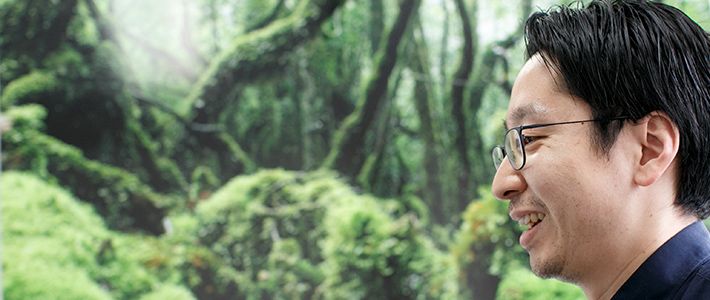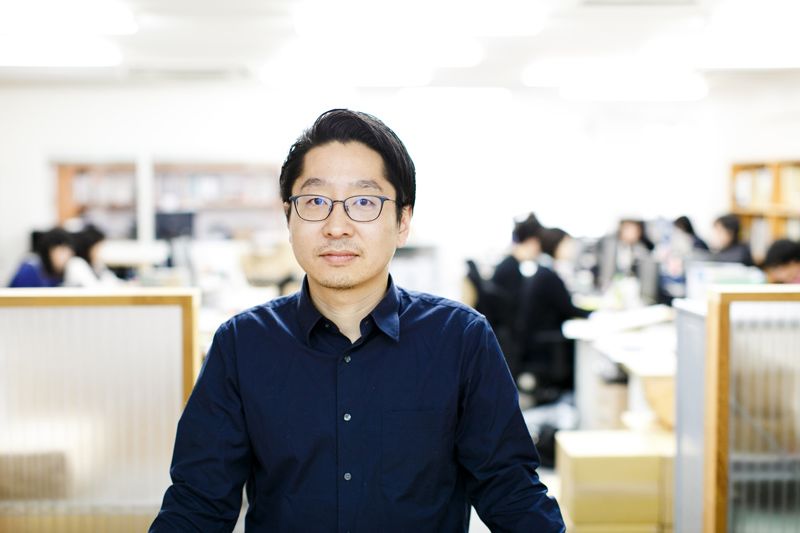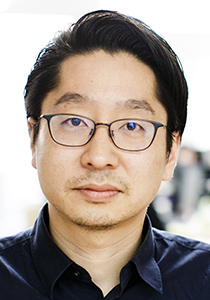
Photography as Problem-Solver: Talking with T3 Photo Festival Cofounder Hayami Ihiro
Culture- English
- 日本語
- 简体字
- 繁體字
- Français
- Español
- العربية
- Русский
The Right Relationship with the Craft
Before Hayami Ihiro became involved in photography, he studied graphic design at a college in the United States. But regardless of how much painstaking effort he put into his assignments, he notes, there always were classmates who would submit works that were far better than his. “When that reality hit me in college, I wouldn’t say I exactly experienced defeat, but I knew then and there that I didn’t stand a chance, and that was that. I came to think I was better fit for a nondesign career.”
After finishing college, Hayami came back to Japan and joined CMS Corp., where he still works. “I was initially assigned to advertising sales for a photography magazine called PHaT Photo.,” he says. “About three years into the job, though, I began to have my doubts about it; I wasn’t cashing in on my college education or my English skills. I had the strong sense that this wasn’t where I really belonged.”
Despite his affinity for art and design, he began to feel he was not the sort of person to be involved in the actual act of creation. He did have some insight into what drives those who create, though. Building on his experience in sales, he decided that he might be able to create a career by helping those people market their work.
The chance to do that came soon. “Right around the time that I had figured out what I wanted to do, the camera manufacturer Ricoh happened to launch a gallery called Ring Cube in Ginza, and I served as its external director for three years. After that, I took the desk as editor in chief of PHaT Photo, which gave me the opportunity to get to know people in photography in Japan and abroad over the next two years. That experience forms the foundation of my current work.”
Eye on the Provinces
The second turning point in Hayami’s career came with the Great East Japan Earthquake of 2011. “Partly because my wife’s family home was affected, I remember feeling as though the disaster was confronting me with the question of whether my work served any real purpose,” he says. “At the same time, I became more conscious of Japan as a country.”
Things have started to turn around in those disaster-struck areas recently, he notes, but when he visits Japan’s rural areas, he still sees communities where centuries-old traditions have been lost in the face of depopulation. “It’s as if a tsunami of another kind is slowly swallowing the country,” laments Hayami. This led him to the question of whether there was some way of confronting this reality with photography. “I’ve been inspired to engage in projects aimed at reinvigorating local communities through photography, starting with the town of Ōtsuchi in Iwate Prefecture and the city of Shimoda in Shizuoka Prefecture.”
When working with members of the community or with people in public administration, Hayami says, he focuses on the problem-solving aspect of photography rather than on the expressive aspect. That might mean playing up photography’s value as a method of documentation or emphasizing the interaction with people that takes place while the photographer does his or her work. He describes why this focus is important: “While I may want to capitalize on photography to start up something new in the community, the technical jargon that I’ve been using all these years in that field means nothing to the local people. I have to rethink the world of photography as I know it, based on whether it will benefit them.
“When I point the camera at people in a community, for instance, I can capture great expressions after they get over the initial self-consciousness. And they’re delighted when I show them the pictures and they discover how they appear to others.” As he notes, it is impossible to look at your own face objectively when you’re aware of that act of self-examination, as in a mirror. “But when people see their faces through the eyes of the photographer—the proud expressions that they project externally—the photos gain real meaning for them. They become images shedding light on the community’s people, revealing value that wouldn’t have occurred to them on their own. These are the kinds of things that I look forward to as I go about my activities.”

Creating Exhibition Spaces for the Artists
The city of Tokyo is the focus of worldwide attention and plays a central role as an Asian hub. Cultures of all sorts have arrived on Japan’s shores, and one of the country’s strengths is the way it has successfully made elements of them parts of its own. Hayami believes that Japan has fermented many new cultural forms in this manner and sees room for still more fermentation.
“With the T3 Photo Festival Tokyo, which I directed in May this year, I hoped to help similarly inspire new perceptions by displaying high-caliber photographic works that were little known to the Japanese in the public space of Ueno Park.”
Hayami describes the planning process for the festival: “Our work exists thanks to artists. When selecting where and how to show their creations, we devoted a lot of energy to preliminary research, including thinking about the significance of exhibiting in that locale and respecting the artists’ work.” Exhibiting in public spaces has its challenges, he admits: The organizers need to consider how to get through to people who have no interest in photography and how they might view the photos. “We do our best to conduct our work with care and attention, so that we don’t leave anyone—whether creator of viewer—wondering what it was all about after the exhibition has ended. We want to make it an occasion that helps propel artists to the next stage and serve as a bridge bringing these superb artists and works to the eyes of viewers.”
Much work remains as Hayami and his team seek to grow T3 Photo Festival Tokyo into that ideal shape. But his outlook is positive: “I hope we can continue to offer a forum that allows many people to discover new values through photography.”
(Originally published in Japanese on May 16, 2017. Text by Matsumoto Tomoki. Photos by Takahashi Munemasa.)
The T3 Photo Festival Tokyo took place on May 19–28, 2017. See the festival website for more information.